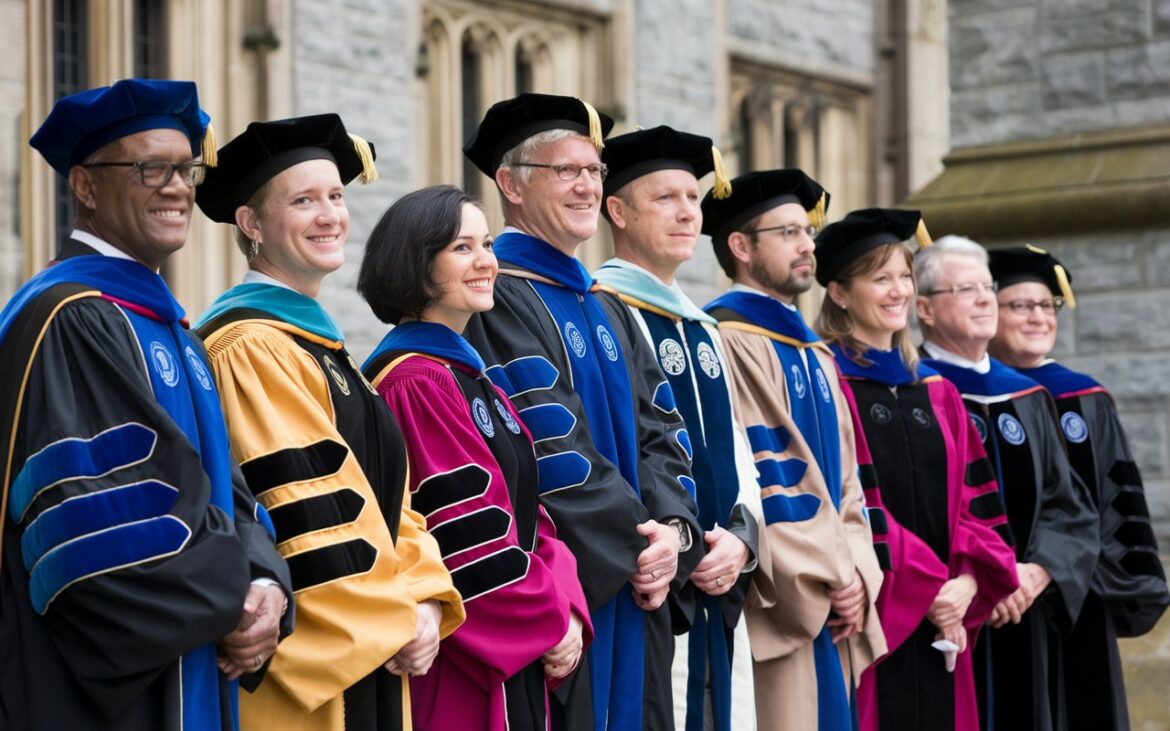
The noted octet in higher education represents a group of eight prestigious universities that have become symbols of academic excellence, innovation, and leadership. These institutions, often referred to as the Ivy League, include Harvard, Yale, Princeton, Columbia, Brown, Dartmouth, Cornell, and the University of Pennsylvania. Their influence stretches beyond classrooms, shaping global education trends, research, and social policies. Known for their rigorous academics and transformative initiatives, the noted octet in higher education inspires students worldwide to aim for greatness. This article dives deep into their legacy, impact, and why they remain at the forefront of higher learning, offering insights that are easy to grasp for school students while exploring their role in modern education.
What Is the Noted Octet in Higher Education?
The noted octet in higher education refers to the eight Ivy League schools, a term coined to describe their shared commitment to academic rigor and prestige. These universities, located in the northeastern United States, have histories dating back centuries, with Harvard founded in 1636 as the oldest. The noted octet in higher education stands out for its selective admissions, world-class faculty, and vast resources. Each school offers unique strengths, like Yale’s focus on humanities or MIT’s emphasis on technology, yet they collectively set benchmarks for quality education. Their alumni include global leaders, Nobel laureates, and innovators, making the noted octet in higher education a powerhouse in shaping future thinkers. Students dream of joining these schools, drawn by their reputation and opportunities.
Historical Roots of the Noted Octet
The noted octet in higher education has deep historical roots, with most schools established before the United States was formed. Harvard, the oldest, began as a training ground for ministers, while others like Yale and Princeton followed, focusing on moral and intellectual growth. Over time, the noted octet in higher education evolved, embracing broader curricula and research. By the 20th century, these schools formed the Ivy League, initially an athletic conference, but soon a symbol of academic excellence. Their early exclusivity has shifted toward inclusivity, with efforts to admit diverse students. The noted octet in higher education continues to honor tradition while adapting to modern needs, balancing history with progress. Their campuses, filled with historic buildings, inspire students to connect with a legacy of learning.
Why the Noted Octet Stands Out
What makes the noted octet in higher education unique? It’s their blend of resources, talent, and vision. These universities boast endowments worth billions, funding cutting-edge research and scholarships. The noted octet in higher education attracts top professors who mentor students closely, fostering critical thinking. Their libraries, labs, and networks are unmatched, giving students access to tools that spark innovation. Beyond academics, the noted octet in higher education offers vibrant campus life, with clubs, sports, and cultural events. Graduates join a powerful alumni network, opening doors to careers in business, politics, and science. The noted octet in higher education also leads in addressing global challenges, from climate change to social justice, making them models for other institutions.
Impact on Global Education Trends
The noted octet in higher education doesn’t just educate students; it shapes how the world learns. These schools pioneer teaching methods, like interdisciplinary programs that blend science and arts. The noted octet in higher education has embraced online learning, offering free courses through platforms like edX, making knowledge accessible globally. Their research influences policies on health, technology, and economics. For example, Harvard’s studies on public health guide international responses to crises. The noted octet in higher education also promotes diversity, inspiring other universities to prioritize inclusion. By setting high standards, these institutions encourage schools worldwide to improve curricula and student support, ensuring education evolves to meet future demands. Their global reach makes the noted octet in higher education a catalyst for change.
Challenges Facing the Noted Octet
Even the noted octet in higher education faces challenges. High tuition costs, despite generous financial aid, deter some students. The noted octet in higher education grapples with ensuring diversity while maintaining merit-based admissions. Critics argue these schools can feel exclusive, with intense competition creating pressure for students. The noted octet in higher education also navigates controversies, like debates over free speech or legacy admissions. Adapting to rapid technological changes requires constant investment in infrastructure. Yet, these universities respond with initiatives like need-blind admissions and mental health support. The noted octet in higher education strives to balance prestige with accessibility, proving that even the best institutions must evolve to stay relevant in a changing world.
The Noted Octet’s Role in Innovation
Innovation is at the heart of the noted octet in higher education. These schools lead in research, from Stanford’s tech breakthroughs to Harvard’s medical advancements. The noted octet in higher education fosters entrepreneurship, with programs that help students launch startups. For instance, Princeton’s innovation hub supports student-led ventures. The noted octet in higher education also tackles global issues, like Yale’s climate research or Columbia’s urban planning solutions. Their labs produce discoveries in AI, renewable energy, and biotechnology, impacting industries worldwide. By encouraging creative thinking, the noted octet in higher education prepares students to solve tomorrow’s problems. Their commitment to innovation ensures they remain leaders in shaping a sustainable and tech-driven future.
How Students Benefit from the Noted Octet
Students at the noted octet in higher education gain more than a degree; they build a foundation for success. Small class sizes allow personalized learning, with professors guiding students on projects. The noted octet in higher education offers scholarships, ensuring talented students from all backgrounds can attend. Campus life is rich, with opportunities to join debate teams, theater groups, or research labs. The noted octet in higher education connects students to internships at top companies and governments. Graduates enter the workforce with skills in leadership, teamwork, and problem-solving. The prestige of a degree from the noted octet in higher education opens doors, but it’s the skills and networks students build that truly shape their futures.
The Future of the Noted Octet in Higher Education
What lies ahead for the noted octet in higher education? These schools are poised to lead in a rapidly changing world. They’re investing in digital learning, expanding access through online programs. The noted octet in higher education is also prioritizing sustainability, with campuses adopting green technologies. Diversity will remain a focus, with efforts to recruit underrepresented groups. The noted octet in higher education will continue driving research in AI, healthcare, and climate solutions. As global challenges grow, these institutions will play a bigger role in finding answers. By staying adaptable, the noted octet in higher education ensures its legacy endures, inspiring future generations to learn, innovate, and lead.
FAQs About the Noted Octet in Higher Education
What is the noted octet in higher education?
The noted octet in higher education refers to the eight Ivy League universities: Harvard, Yale, Princeton, Columbia, Brown, Dartmouth, Cornell, and the University of Pennsylvania. These schools are known for their academic excellence, selective admissions, and global influence.
Why are these schools called the noted octet?
The term noted octet in higher education highlights the eight Ivy League schools as a group of prestigious institutions. “Octet” means eight, and “noted” emphasizes their fame and impact in higher education. The phrase gained traction in discussions about their role in shaping academia.
How hard is it to get into the noted octet in higher education?
Admission to the noted octet in higher education is highly competitive, with acceptance rates often below 10%. Applicants need strong grades, test scores, extracurriculars, and essays. However, holistic admissions consider diverse talents and backgrounds, giving every student a chance.
Do the noted octet schools offer financial aid?
Yes, the noted octet in higher education provides generous financial aid. Many offer need-blind admissions, covering full tuition for low-income students. Scholarships and grants ensure that financial barriers don’t stop talented students from attending.
How do the noted octet schools influence global education?
The noted octet in higher education shapes global education through research, innovative teaching, and policy influence. Their online courses, diverse programs, and leadership in fields like technology and social justice set trends that other universities follow worldwide.
Conclusion
The noted octet in higher education stands as a beacon of excellence, innovation, and opportunity. From their historic roots to their modern-day leadership, these eight Ivy League schools—Harvard, Yale, Princeton, Columbia, Brown, Dartmouth, Cornell, and the University of Pennsylvania—continue to inspire students and educators alike. By tackling challenges, embracing diversity, and driving research, the noted octet in higher education shapes the future of learning. For school students dreaming of higher education, these institutions represent not just prestige but a chance to grow, innovate, and make a difference. As they evolve, the noted octet in higher education will remain a guiding light for generations to come.


